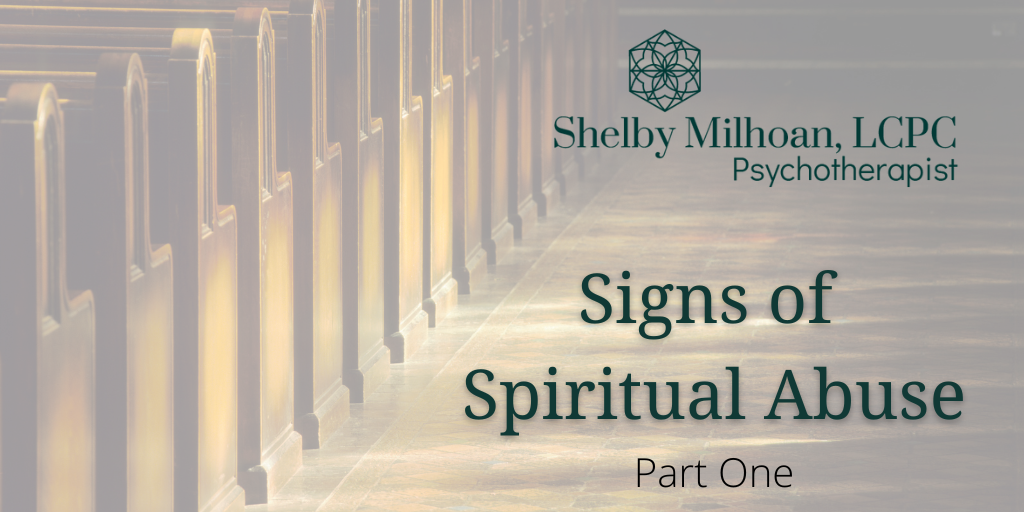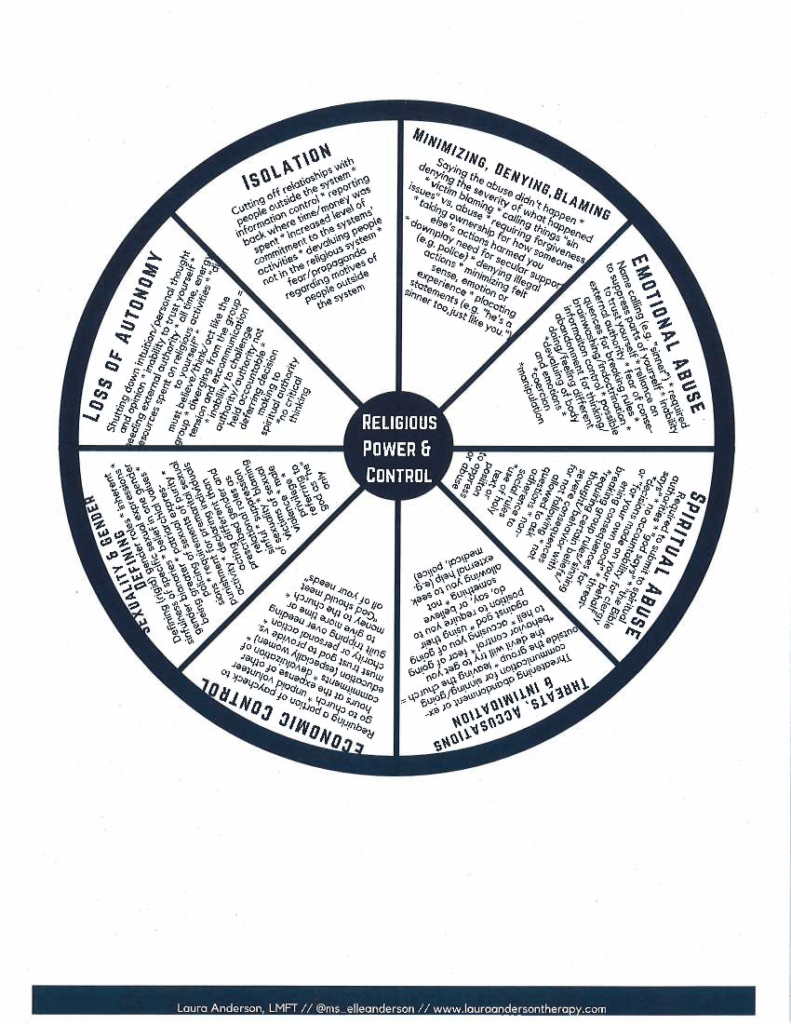
Signs of Spiritual Abuse—Part One
Recognizing Coercion, Control, and Emotional Harm in High-Control Religious Environments
Over the past few years of doing Dialectical Behavior Therapy (DBT) and working with clients who’ve had difficult childhoods, I began noticing a recurring theme. As we explored their life experiences, some shared deeply painful stories tied to religion. What I heard was shocking: core beliefs instilled in childhood—often through family religious systems—were still causing intense anxiety, shame, and fear today.
In many cases, these painful beliefs were tied to spiritual abuse or religious trauma. These emotional wounds often showed up alongside patterns like substance use, disordered eating, self-harm, or persistent self-doubt. Wanting to understand more, I attended a CEU course by the Religious Trauma Institute, featuring Dr. Kathryn Keller and Anna Clark-Miller, LPC. What I learned was powerful—and I hope that by sharing it here, you’ll know you’re not alone or “crazy.”
What Is Spiritual Abuse?
Spiritual abuse is defined by Ward (2011) as “a misuse of power in a spiritual context whereby spiritual authority is distorted to the detriment of those under its leadership.”
In other words, it’s the use of religious authority or belief systems to control, harm, or intimidate others, especially within tightly controlled or high-demand religious groups. Spiritual abuse can be verbal, emotional, physical—or all three. And sadly, it often goes unrecognized for years because the abuse is framed as “faith” or “devotion.”
One powerful framework for recognizing this dynamic is the Religious Power & Control Wheel, developed by the Religious Trauma Institute. Similar to the Power and Control Wheel used to describe domestic violence, this tool highlights common tactics used in spiritual abuse. Because it includes a lot of information, I’ve broken this topic into two parts. This post (Part One) covers the first four areas.
1. Coercion and Threat 🚨
Spiritual abuse almost always includes threats, whether overt or implied. These may sound like:
- “God is always watching.”
- “You’re straying from the path to salvation.”
- “You’ll go to hell if you continue thinking like that.”
Sometimes, it’s the threat of losing group belonging—which can feel devastating when the group is your entire source of emotional, social, or even financial support.
In high-control religions, even natural human emotions like attraction or doubt may be labeled as dangerous. Members may be told they’re “possessed” for having “sinful” thoughts or pressured to perform acts of penance, including self-harm or intense religious rituals.
These fear-based tactics are designed to:
- Silence dissent
- Control behavior
- Undermine personal autonomy
2. Spiritual Intimidation 👑
In many high-control religious settings, certain leaders are considered to have a “divine appointment.” These individuals are seen as having a special connection to God—and their authority is rarely questioned.
Some warning signs:
- Leaders are treated like royalty or beyond reproach.
- They use sacred texts to justify punishment or harm (“God said you must be disciplined”).
- They are exempt from the rules they impose on others.
This use of spiritual intimidation reinforces the group’s hierarchy and discourages critical thinking, often creating deep fear and helplessness among members.
3. Emotional Abuse 😔
Emotional manipulation is another hallmark of spiritual abuse. It might include:
- Name-calling (e.g., “sinner,” “disobedient,” “unworthy”)
- Public shaming for perceived moral failures
- Unrealistic emotional expectations (e.g., “don’t feel angry,” “never be jealous”)
When members inevitably “fail” to meet these impossible standards, they are often pressured to return to the group for deeper “cleansing,” repentance, or healing, further reinforcing dependence on the system.
Some common emotional impacts include:
- Suppressed emotions and emotional numbing (substance abuse, self-harm behaviors, avoiding situations that bring about intense emotions, dissociation)
- Internalized shame and self-hate (“I’m not good enough.” “I’m unworthy.” “I’m a bad person.” “No one is ever going to love me.”)
- Fear of trusting one’s inner voice or body signals
Self-care is often labeled as selfish, creating disconnection from one’s own needs, boundaries, and intuition.
4. Isolation 🌐
Spiritual abuse often thrives in isolation. Members may be cut off from:
- Outside professionals (like therapists, doctors, or lawyers)
- Mainstream media or news
- Friends or family not involved in the group
In some cases, this is literal—communes, neighborhood “buyouts,” or closed compounds. But more often, it’s psychological isolation. Members are told the outside world is evil, untrustworthy, or dangerous.
This fear can make it incredibly difficult to leave—even when the group is harming them. Many people describe feeling intensely alone, scared, or “different” from the rest of the world.
You Are Not Alone 💛
If any of this resonates with your experience, please know: you are not alone. The effects of spiritual abuse can be profound, but healing is absolutely possible. By recognizing these patterns, you’re already beginning to reclaim your voice and your truth. Stay tuned for Part Two, where we’ll explore the remaining spokes of the Religious Power & Control Wheel, including financial exploitation, gender roles, and suppression of individuality.


Shelby Milhoan, LCPC
